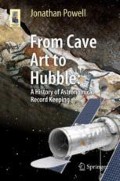Abstract
Mercury is a curious little world and still presents astronomers with a great many questions. The smallest and innermost planet of our Solar System offers little to the naked eye, and without superior telescopic capability, little to the observer. With an orbital period around the Sun of just 87.97 days and speeding through space at nearly 47 km per second, this planetary representation of a Roman deity is the quickest of any planet to orbit the Sun. Yet, it is our very Sun that has led science to find out a great deal about Mercury beyond the information gathered from various missions to the planet and ground-based observations. For it is the Mercurian transits that have given us great insight into this tiny world measuring just 4878 km in diameter, comparable to the size of the continental United States.
Access this chapter
Tax calculation will be finalised at checkout
Purchases are for personal use only
Author information
Authors and Affiliations
Rights and permissions
Copyright information
© 2019 Springer Nature Switzerland AG
About this chapter
Cite this chapter
Powell, J. (2019). Mercury Transitions. In: From Cave Art to Hubble. Astronomers' Universe. Springer, Cham. https://doi.org/10.1007/978-3-030-31688-4_6
Download citation
DOI: https://doi.org/10.1007/978-3-030-31688-4_6
Published:
Publisher Name: Springer, Cham
Print ISBN: 978-3-030-31687-7
Online ISBN: 978-3-030-31688-4
eBook Packages: Physics and AstronomyPhysics and Astronomy (R0)

